Healing from Food Addiction
Dr Alan Goldhamer was interviewed by Jon McMahon as part of the iThrive docuseries: "Rising from the Depths of Diabetes and Obesity". This video is 15 mins long.
Complimentary Screening Call LEARN MORE
Dr Alan Goldhamer was interviewed by Jon McMahon as part of the iThrive docuseries: "Rising from the Depths of Diabetes and Obesity". This video is 15 mins long.
Chick Lewis shares his story of incredible healing, throughout many parts of his body, some hoped for and others surprising, after fasting at TrueNorth Health Center for 37 days.
This article originally appeared in the Fall 2016 issue of Health Science magazine, the member magazine of the National Health Association.
NHA president gets up close and personal at TrueNorth Health Center
By Mark Huberman
From September 10–17, my wife Wanda and I (pictured below) had the wonderful experience of spending a week at Dr. Alan Goldhamer’s TrueNorth Health Center in Santa Rosa, California, covering it for this magazine. As you will see from some of the pictures I am sharing, it is truly a remarkable facility that offers the finest and most comprehensive care that our health movement has ever produced.
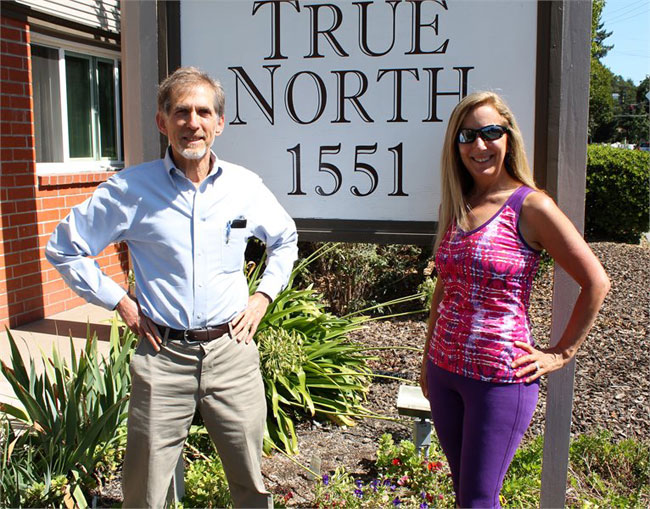
The environment at TrueNorth is soothing and conducive to healing, and the accommodations are spacious, clean, and include free Wi-Fi, flat-panel televisions, and even Sleep Number beds. The daily food buffets prepared by Chef Ramses Bravo and his staff are a model for just how easy, enjoyable, and inspiring an uncompromising whole-foods, plant-based, SOS-free (salt, oil, sugar) diet can be.
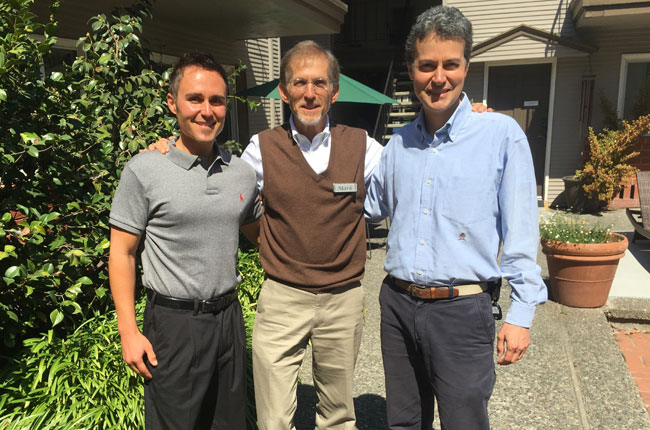
L to R: Dr. Peter, Raisanen, Mark Huberman, and Dr. Peter Sultana
There are in-depth health lectures and/or cooking classes at least twice a day, along with fitness and nutritional consults and training, yoga, chiropractic care, and more. Most importantly and impressively, the Center offers world-class fasting supervision by an extraordinary staff that includes caring and experienced supervising medical doctors, naturopaths, chiropractors, a resident physician, and daily visits by interns, all of whom combine to give patients one-on-one daily care like nowhere else I have ever seen or heard of. The entire staff—from the receptionists to the cooks to housekeeping—is as friendly and welcoming as you could imagine.

Chef Ramses Bravo giving a cooking demonstration
During our stay, I had the opportunity to interview many of the guests, and I am pleased to report that a large number of them joined the NHA after being introduced to our fine publication, Health Science. Here is a sampling of the wonderful people I met and a glimpse into some of their remarkable stories of recovery.
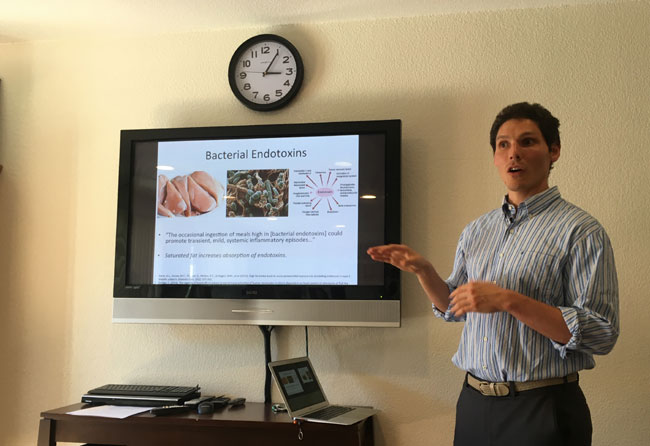
David Goldman lecturing
Robert Smith of Newport, Oregon
Robert Smith is a veteran deep-sea fisherman who is on his fourth visit to TrueNorth over the course of a couple of years. He is proud to report that he has lost 120 pounds and has completely changed his life for the better. He learned about TrueNorth after reading The Pleasure Trap. Robert described himself as previously being “very overweight, on medication, and just miserable.” He tried all kinds of gimmick diets, including Adkins, juice diets, and protein shake diets, all of which caused him to lose weight only to gain it back.
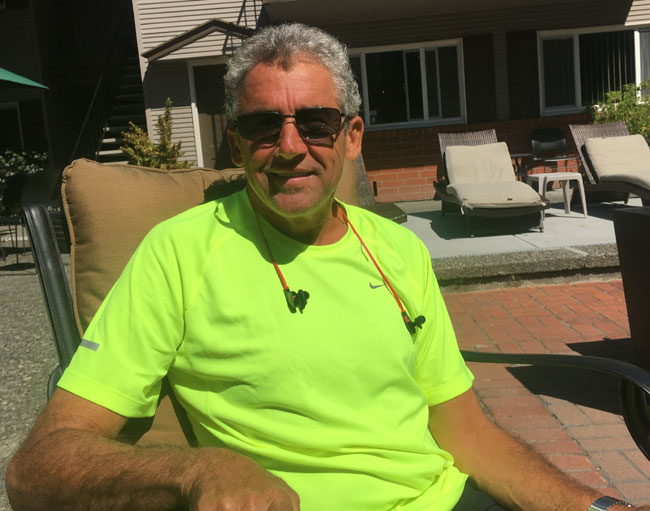
Robert has fasted under the care of Dr. Michael Klaper, but on his current stay, he was under the care of Dr. Anthony Lim, whom he describes as “funny and very energetic.” Robert has tremendous praise for the entire staff, from the housekeeping staff to the doctors, he says, “all of whom combine to create a very healing environment.” He also commented that the price is more than right and truly a bargain, adding, “I frankly don’t know how they do it—since they feed you, take care of you, wash your clothes, and provide you with lectures—all at a great price.” Now when Robert goes out to sea, his wife makes him a bunch of plant-based, SOS-free meals. He does admit to missing eating fish, but he says he is never turning back.
Elizabeth Oehler of Montville, New Jersey
Elizabeth turned 75 in October and came to TrueNorth to deal with a lengthy battle with diabetes and osteoarthritis in her knees. She and her husband, Max, were referred to TrueNorth by Dr. Ronald White, a whole-food, plant-based doctor in Long Valley, New Jersey, who operates the Ethos Health Center. Dr. White told Elizabeth, “If you want to get rid of your diabetes, you’ve got to go to TrueNorth.”

Once at TrueNorth, Elizabeth fasted for 14 days under the care of Dr. Anthony Lim, and after a period of re-feeding, I met her as she was about to return home. She is thrilled to report that her diabetes is gone and that she hasn’t had any pain in her knees. She loved Dr. Lim, but also praised the Center’s new resident, Dr. Peter Raisenan, as well as the many interns who see patients several times a day. She found everyone to be very caring and never rushed. She describes TrueNorth as a “wonderful place that is down to earth and like a spa.” She reports meeting many great people with whom she is sure to remain in contact, adding that for her and her husband of 49 years, “Coming to TrueNorth was the best decision we ever made—except getting married!”
Lynn Corrigan of Camano Island, Washington
Lynn is a 65-year-old massage therapist who came to TrueNorth following her recent surgery for colorectal cancer, determined to avoid the return of her cancer. She fasted 17 days under the care of Dr. Michael Klaper, who she states, “held my hand through the entire stay.” He challenged and inspired her to stick with the program for the long term so that there will be “no cancer cells in my body at all, and so my immune system will be able to tackle those cancer cells that we make on a daily basis.” She also greatly appreciated Dr. Doug Lisle, who she states “does for the mind what these other guys do for the fasting and cellular repair.” She claims that “From the beginning she has looked at cancer as her friend and teacher.”
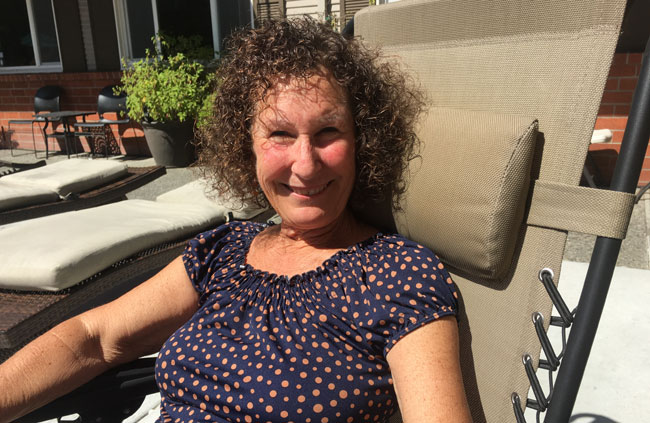
Rakesh Wradhwa of Dubai, United Arab Emirates
Rakesh is a 59-year-old resident of Dubai who grew up in India but who spends lots of time in the U.S. While in school, he learned about naturopathy, read about Gandhi and was fascinated by the beneficial aspects of fasting, but he never practiced it himself. He reports that India was not a healthy country in which to grow up, since, while people are vegetarian, they are often very unhealthy because they eat a lot of salt, oil, sugar, and dairy products.
Rakesh first discovered Dr. Goldhamer back in 1991 when he was operating the Center for Conservative Therapy in Penngrove, California. Rakesh’s wife was diagnosed with breast cancer and came to the Center for a fast. She fasted for around 28 days and her lumps completely disappeared. He started coming to TrueNorth in 2009 after being diagnosed with a constellation of health problems, including lupus, high blood pressure, sleep apnea, headaches, skin problems, prostate enlargement, and hypothyroid. He was prescribed some very potent drugs but was not getting any better. He fasted for 30 days and had some significant healing crises. Over time, his lupus went into full-scale remission, and while his thyroid issue has not resolved itself, he reports that it is certainly better and the medication for it has been cut nearly in half.
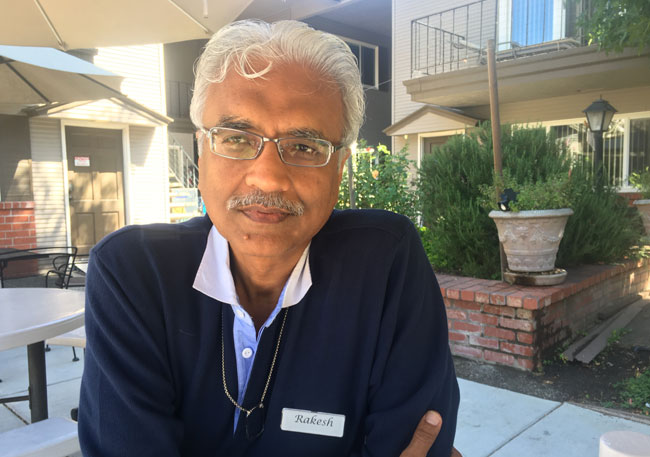
Rakesh’s blood pressure has been significantly reduced and his sleep apnea has improved to the point that he often has been able to do without the C-PAP device, something he attributes not only to the fasting but also following a plant-based diet. He now comes to TrueNorth every year. Sometimes he fasts and sometimes he does not. Like so many of the other guests, he has the highest praise for the staff at TrueNorth, who he states, “basically don’t leave you alone.” While he has stayed at more luxurious centers around the world, he considers TrueNorth “by far the most effective in the shortest possible time.”
Dr. Madeline Long of Bryn Mawr, Pennsylvania
Madeline Long has practiced Internal Medicine in Bryn Mawr Hospital for approximately 33 years. She came to TrueNorth almost a month ago, and at the time of our interview, she was on her 13th day of a fast. Two years ago, she received a cancer diagnosis and wanted to do something alternative since she became convinced that “one single drug, one simple treatment, one single radiation bout does not kill all the cancer cells.” She has come to believe that cancer cells need glucose to survive, and the best sway to change their metabolism is to do a water fast.

From a medical standpoint, she considers Dr. Goldhamer to be brilliant and has high praise for the staff he has assembled, all of whom provide a completely supportive, patient-friendly experience. She also described them as being welcoming, loving, caring, and comforting. Her personal physician at the Center is Dr. Michael Klaper, who she also considers a brilliant practitioner. She is amazed and impressed by the twice-a-day doctor visits, weekly blood tests, and daily monitoring, which she considers “amazingly embracing for a patient.” She has become totally immersed in the TrueNorth program and plans on taking it back to her practice. She characterizes it as a religion to her and that her “new theology” is plant-based.
Gavino Villa, of Paso Robles, California
Gavino is a 54-year-old Mexican-American who for the past five years has operated a bamboo farm under the name “Paso Bamboo.” He suffered from Jorgen’s Syndrome, a rare autoimmune disease that mostly affects women, which obstructs the body’s ability to produce lubrication. It initially affected his eyes, but then progressed to his joints, resulting in a debilitating effect on his hip and ankle. He also suffered from some very severe hemorrhoids. His doctor prescribed various medications that only made matters worse and led to depression. He reports that trying various “quack treatments” did nothing to help him.
His first step in the direction of true health care came from a Ted Talk delivered by Dr. John McDougall. After 10 minutes of listening to his wisdom, Gavino decided he would never eat meat again. Just by cutting out meat and following Dr. McDougall’s dietary recommendations, his hemorrhoid problems resolved, but his weight remained an issue as did his joint problems. He then came across Dr. Joel Fuhrman’s book, Fasting and Eating for Health, and thought that maybe fasting could help him recover. He found a local Adventist anesthesiologist who was transitioning out of his conventional medical practice who helped him (and even joined him!) in the fast.

After a 15-day fast, his symptoms cleared up by 90%, but then regressed to 60% afterwards. Still believing that fasting would be the key for him, he Googled “fasting” on the Internet and came across Dr. Alan Goldhamer—a discovery he describes as a “godsend.” When he arrived at TrueNorth, one of the first lectures he heard was from Dr. Anthony Lim, who really set him straight on diet, causing him to cut out his “peanuts, tortillas, and bread,” lifelong staples of his diet.
Dr. Peter Sultana became Gavino’s primary doctor and supervised his 20-day fast. As a result of the fast, all of his symptoms cleared. He stayed an additional 10 days to re-feed and is back at home and at work on his farm in the best health of his life. Before leaving, one of his other good fortunes was to have a consultation with David Goldman, who he considers the best trainer and nutritionist in the world and an extraordinary resource for TrueNorth. David sent him home with not only an exercise program but a nutrition plan for the next six months.
Gavino credits TrueNorth with not only giving him back his health, but control of his body for the first time in his life. He also believes they provided him a spiritual awakening. He insists that there is no place like it because the Center can attack all aspects of a patient’s needs. He credits Dr. Goldhamer for assembling a remarkable, caring staff that includes not only the doctors but the cooks and the cleaning staff. He also greatly admired the way they all appreciated and respected Dr. Goldhamer as their boss. ***
Below: the TrueNorth Health Center courtyard

This article originally appeared in the Fall 2016 issue of Health Science magazine, the member magazine of the National Health Association.
Csilla Veress, N.D., L.Ac 
Parkinson’s disease is a progressive and debilitating neurological disorder that affects one million Americans and more than four million people worldwide. It is not known exactly what causes Parkinson’s disease (PD) and it is without a cure.
According to the National Institute of Neurological Disorders and Stroke, PD affects more men than women (by 50%), and is found more often in older people (60 years old on average, although “early onset” can occur before age 50). Total risk is 2 to 5% unless a family member has a known gene for the disease.
Knowing exactly how many cases of PD exist is difficult (the estimate is about 50,000 a year in the U.S.) since in the early stages many people think that their symptoms reflect normal aging, so they don’t consult their doctors. Other health conditions may also present symptoms similar to PD (there is no definitive test to find out if someone has the disease).
Tremors in the arms or legs are considered the hallmark of Parkinson’s, though the disease inevitably progresses. As motor control diminishes, simple tasks like writing and walking are typically the first to go. Patients eventually become wheelchair-bound and suffer from dementia. But perhaps most disturbing is that Parkinson’s disease responds poorly to conventional therapy.
Click here to read the entire article as a PDF.
By Mark Huberman
This interview originally appeared in the Summer 2016 issue of Health Science magazine, the member magazine of the National Health Association, of which interviewer Mark Huberman is the president.
Dr. Anthony Lim 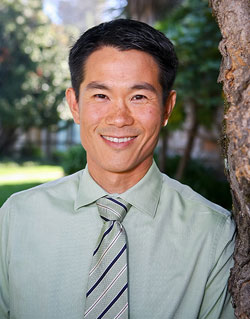
Dr. Lim, how are you this evening?
I am doing great. I’m sitting right here in my office at TrueNorth with my new dog, Balto. He is fast asleep right by my feet. He’s a poodle mix that our family recently adopted from a local shelter. Dr. Goldhamer has graciously allowed me to bring him to work, and today was his first day. He has been a hit with the patients and staff alike, and many joked that he is now the new therapy dog.
My late father used to say that most people don’t worry about their health until they’ve lost it, and they don’t really change their way of thinking until they have some sort of a health crisis. But as I understand, that wasn’t the case with you. Tell me about how you learned about whole-food, plant-based nutrition.
It’s a pretty funny story. I first learned of the whole-food, plant-based movement in July of 2014. Believe it or not, at that time I was eating a low-carb diet, and there were a couple of years during my residency training that I was actually advocating a low-carb diet for many of my patients.
However, in July of 2014, I happened to be watching PBS and saw Dr. Joel Fuhrman come on the television. I had never heard his name before, but he was giving a presentation on whole-food, plant-based eating. This was the first time I had ever heard those four words mentioned together. He was making these amazing claims about the power of a whole-food, plant-based diet to not just prevent, but actually reverse and cure, chronic illnesses such as heart disease, diabetes, autoimmune disease, hypertension, and high cholesterol, and it really piqued my interest.
The very next day I checked out Dr. Fuhrman’s book Eat to Live from the public library. That same day, I read his book cover to cover, proceeded to watch Forks Over Knives and Fat, Sick, and Nearly Dead on Netflix, and by the next morning I was officially a convert to the plant-based movement. I have not looked back since! You know when you see and hear the truth face to face, you can’t deny it. I would say that since that point I have had an ever-increasing, confidence that this is the right way to live and I have, in my own mind, committed the rest of my life to this movement.

Above: Dr. Lim with his family
One of the things I often hear is that in medical school they don’t teach anything about nutrition. Was that your experience earning your medical degree at Boston University? Did you really have no exposure to nutrition?
I know, it’s crazy, isn’t it? For the life of me I cannot remember a single lecture about nutrition. The only exposure I recall was more of an afterthought; for example, telling patients to try to eat more fruits and vegetables at the end of a visit. Considering that the vast majority of chronic illness is so strongly connected to what we eat, we must take steps to incorporate more nutrition education into medical school curriculums.
So when you had this epiphany about the wisdom and power of a whole-foods, plant-based diet, did that change both your personal and professional life?
It dramatically changed both. Personally, my diet has changed significantly to include far more fruits, vegetables, legumes, and whole grains, and far less animal products and processed foods. Before my “conversion moment” and during my low-carb phase, I was avoiding foods such as rice, potatoes, and oatmeal, which are now staples of my diet. I also ate far more meat; I even recall once going to In-N-Out Burger and eating not just one but two low-carb burgers consisting of two beef patties, tomato, and onion wrapped in leaves of lettuce. I had the misguided belief that it was fine for me to eat as much meat as I wanted as long as I minimized my carbohydrate intake.
My professional life has also dramatically changed. Previously, I worked in the Family Medicine department at Kaiser Permanente in Santa Rosa, California, providing general clinical care to children and adults. Since going plant-based, I continue to work at Kaiser, but only a half-day per week. I also co-lead their monthly plant-based class along with a nutritionist, Melanie Larson. This class is Kaiser Santa Rosa’s most attended group class, with anywhere from 40 to 60 people in attendance each month, which shows the growing interest of the public in this area. We frequently have guest speakers, including Dr. Ben Brown, the Medical Director of Dr. Dean Ornish’s Lifestyle Medicine Program, and this August, Dr. John McDougall will be our guest speaker. In addition to my work at Kaiser, I also serve as the Medical Director of the McDougall Program and as a staff physician at TrueNorth Health Center. Essentially, I have migrated from 100% general clinical care to a mixed practice that is focused on healthy living, primarily through a whole-food, plant-based diet.
As a result of your own conversion, did you lose weight and experience other improvements in your overall health?
I was already relatively healthy before becoming plant-based. I was very active and was not overweight. However, I would say that since going plant-based my overall health has improved even further. For example, I lost about fifteen pounds and went down two waist sizes despite eating as much food as I wanted. Friends of mine are sometimes shocked at the amount of food that I consume. In addition to losing weight, my cholesterol numbers, though not bad to begin with, improved as well.
I imagine you also began to feel better along the way?
Absolutely! I now have good energy, my GI plumbing is working better, I feel less heavy and tired, especially in the afternoons, and overall I feel very “clean” inside.
How did you break your plant-based news to your family?
Soon after going plant-based, I went back to my hometown of San Diego with my wife and kids to spend a week with my parents, my brother, his wife, and their three kids. On the day we arrived, I gathered everyone around and said, “I have one favor to ask during our week together: that we watch Forks Over Knives together as a family. It’s a short documentary and it will be well worth your time.” So we watched it together and the very next day my parents essentially cut out animal meat from their diet because they were so compelled by what they saw in the film. And my brother’s family has dramatically decreased their meat and dairy intake while increasing their fruit, vegetable, legume, and starch intake.
How did you find your way to Dr. Alan Goldhamer and TrueNorth?
It was August 7th, 2015—I will never forget that day. My mom, knowing of my passion for plant-based nutrition, forwarded me an email from the McDougall Newsletter that contained an announcement of a new physician opening for a joint position between the McDougall Program and TrueNorth Health Center. By this time, I knew well who both of these men were. I had heard them both lecture at different conferences, and was inspired by each of them. So you can imagine my excitement and disbelief at the prospect of being able to work closely with them. I applied immediately, and a few days later Dr. Goldhamer called me in for an interview. I showed up at 3:30PM at TrueNorth (less than a five-minute drive from where I live in Santa Rosa), and three hours later, I was offered the job. I was so shocked and even remember saying, “You know Dr. Goldhamer, I understand if you need some time and you need to interview other applicants.” But Dr. Goldhamer, being the confident and decisive person that he is, simply said, “Nope, I know what I want and you have what I want, so I’m done.” Needless to say, I accepted the job on the spot and the rest is history! I began my new positions that very month.
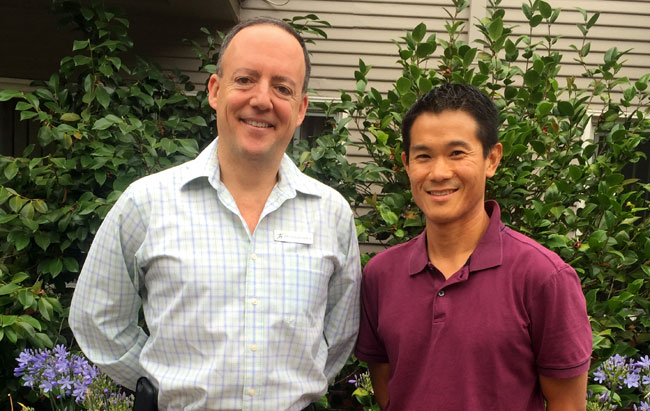
Above: Dr. Lim with Dr. Alan Goldhamer
I am told that your wife is an M.D. as well, a Dermatologist. What did she think of this whirlwind conversion?
She has been thrilled to witness first-hand how happy, passionate, and fulfilled I am on a daily basis in my new roles. I have known her since I was 18 years old, and she saw me through an eight-year long journey after college, exploring the worlds of foreign language, computer science, business, law, and teaching, essentially trying to figure out what I wanted to do with the rest of my life. So she could not be happier or more excited to see me find my true calling these last couple of years.
Has she shared your enlightenment about being plant-based?
Yes, she also eats far more plant-based now. She recently got her labs checked, and I’m happy to report that her cholesterol levels have improved dramatically since changing her diet.
I know from my many years in this health movement that it is always a great plus when your spouse is on the same page.
Absolutely! As the saying goes, “Happy wife, happy life!”
Tell me what it is like working with Dr. Goldhamer.
I am inspired by his commitment and passion toward healthy plant-based eating and the relatively unstudied field of water fasting. What Dr. Goldhamer has built here at TrueNorth is unique and like nowhere else in the United States, much less the world. He is brilliant, eloquent, charismatic, decisive, and an overall great leader. I appreciate his hands-off style of management as well. He hires the right people and then gives them the autonomy to run their own practice in the way that they see fit.
What is so special for you in working at TrueNorth?
In medicine nowadays, it is rare to witness true healing occur in your patients. More often than not what we’re doing is putting band-aids on patients in the form of medications, surgeries, and procedures, and rarely getting to the root cause of illness. And so what is so special about TrueNorth is that day after day I stand witness to patients making radical dietary and other lifestyle changes that address the root cause of their chronic conditions and, ultimately, brings them to a much healthier state.
Just today I had a one-month follow-up phone conversation with a 63-year-old male patient of mine after his four-week stay at TrueNorth. He has a history of coronary artery disease and has had a stent placed. Prior to coming to TrueNorth, he had hypertension, requiring a powerful blood pressure medication called amlodipine. He had recently learned that he had a condition called “diastasis recti,” often associated with obesity, which is basically a separation of the two sides of the rectus abdominus muscle (the abs). His surgeon told him that it would likely require surgical repair.
During his stay, he water-fasted for 15 days and transitioned to a plant-based diet, eating TrueNorth food for the remainder of his time there. In four weeks, he lost over 20 pounds, and he came off his blood pressure medication with better blood pressure than when he arrived on medication (his blood pressure on the day he left was in the 100s/70s). His follow-up labs one month after leaving the program showed that compared with his labs prior to his stay at TrueNorth, his total cholesterol had dropped by 50 points, his LDL (the bad cholesterol) had dropped by 30 points, and his triglycerides had dropped by 50 points. He was excited to report 100% adherence to the plant-based diet since leaving the program.
He had an office visit with his cardiologist a few days before our phone call. His cardiologist was shocked to see how well his blood pressure was controlled despite stopping the amlodipine. His cardiologist also backed off of his previous recommendation to start a cholesterol-lowering medication, given how much his lab values had improved in such a short amount of time.
My patient also had a follow-up visit with his surgeon for his diastasis recti. The surgeon was surprised to discover that the separation between my patient’s rectus abdominus muscle had shrunk from two finger widths to one finger width, and from 8 cm to 6 cm long. The surgeon no longer recommended surgery for him, and instead suggested that he continue to try to close the gap through continued weight loss and lifestyle change.
Finally, my patient reported feeling overall much better. He reported far more energy (he no longer woke up feeling tired in the morning), and he had reduced his coffee drinking from three cups per day to a single cup once a week! In the past, he had suffered from weekly headaches requiring high doses of aspirin. In the four weeks since leaving TrueNorth he has yet to have a single headache. In the past he had also suffered from right shoulder pain from an old injury, and had required six to eight Advil multiple times a day to control the pain. Since leaving TrueNorth, he has taken a total of two Advil. He also was very pleased with how well his GI plumbing was working. I could go on and on, but this is just one example of the kinds of miracles that we are privileged enough to witness here on a daily basis.
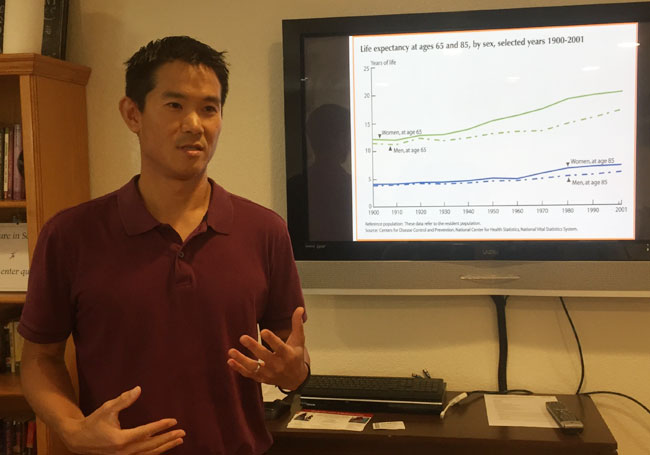
Above: Dr. Lim lecturing at TrueNorth
Fasting had to be an entirely new experience for you. Tell me what that education has been like?
In all honesty, I knew very little about water fasting prior to working at TrueNorth, but was excited to learn more. In a short amount of time I have developed a deep appreciation for water fasting’s ability to reset one’s palate and allow one’s body to literally heal itself from the inside-out from a multitude of conditions, as evidenced by patients such as the one I mentioned above. Dr. Goldhamer was confident from the day I first interviewed with him that within a few weeks of working here I would witness first-hand the beneficial effects of water fasting in our patients and become convinced of its healing powers. He was absolutely right!
What is the importance of fasting under professional supervision?
Common clinical issues that can arise during extended fasting beyond two to three days and that require medical intervention include: dehydration, electrolyte imbalances, and symptoms such as nausea, vomiting, weakness, and light-headedness; thus, professional supervision is critical to fasting safely.
What role does fasting play in the full recovery and maintenance of health?
I see fasting as a powerful healing modality that is complementary to whole-food, plant-based nutrition, in terms of optimizing one’s health. It is useful for anyone hoping to recover from most chronic medical conditions, as well as for those simply trying to maintain overall good health.
In an earlier conversation, you told me about another patient who had a very positive result recovering from ulcerative colitis, a condition that, in my experience, has been a very challenging one even for hygienic physicians. Can you share that case history with us?
Absolutely. I recently took care of a 32-year-old female with a long history of severe ulcerative colitis characterized by 8 to 12 episodes a day of diarrhea with blood and mucus. When I first met her she was on multiple powerful medications, including the maximum dose of an oral corticosteroid called budesonide, the maximum dose of an oral anti-inflammatory medication called mesalamine, and daily mesalamine suppositories. Despite these medications she continued to suffer from daily abdominal pain and diarrhea. She was finally prompted to seek help when her gastroenterologist suggested she start on yet another medication called azathioprine, a powerful immunosuppressant drug with adverse effects that include lymphoma and bone marrow suppression.
During our time together, both at the McDougall Program, where I first met her, and then subsequently during her three-week stay at TrueNorth, we essentially switched her from a Paleo diet, which she had been on during the months leading up to the program, to a plant-based diet that was very simple and based primarily on steamed vegetables and white rice porridge, since that was all her body could tolerate. I’m happy to report that she was not only able to come off all her medications, including the budesonide, the oral mesalamine, and the mesalamine suppository, but for the first time in years she reported having normal bowel movements. That first day she had a normally formed stool without blood and mucus she told me it had been so many years since seeing a normal stool that she had all but forgotten what one looked like. I recently followed up with her since she went back home, and she reports continuing to do well. She remains off all medications, and is slowly expanding her diet to include other foods such as sweet potato.
What are some other conditions that you have seen respond quickly and effectively to fasting and the whole-food, plant-based diet at TrueNorth?
I would say hypertension, diabetes, high cholesterol, and overweight/obesity are the conditions that respond the most quickly and effectively to water fasting. I have also seen remarkable outcomes in many patients with autoimmune conditions such as rheumatoid arthritis, lupus, and psoriasis.
Do most people that come to TrueNorth go on a water fast?
Yes, I would estimate that roughly two-thirds or more of the patients who come to TrueNorth go on water fasts of varying lengths. Some patients who come on medications that cannot safely be discontinued may juice fast instead of water fast. Other patients come simply to stay here and eat the food—after all, the food here is truly unique. Chef Ramses Bravo and his team do an incredible job. I know of no other place in the world where a person can eat three meals a day of deliciously prepared SOS-free (salt, oil, sugar) whole, plant-based foods.
Is the great food one of the perks for you working at TrueNorth?
Oh my gosh, it’s one of the biggest perks! I am thankful each and every day to be able to enjoy the wonderfully wholesome food here at TrueNorth. Since I do not live on the premises as some of the other staff do, I frequently bring home Tupperware containers filled with TrueNorth food for the rest of my family to enjoy.

Above: Dr. Lim showing off his vegetable grilling skills!
What are your impressions of some of your other colleagues at TrueNorth, particularly your fellow M.D.s, Michael Klaper and Peter Sultana?
My colleagues across the board here at TrueNorth are exceptional. I look forward each and every day to coming to work in such a mission-driven, collegial, and supportive environment, and feel truly honored to work here. Specifically, with regard to Drs. Klaper and Sultana, they are both extremely gifted, intelligent, and caring physicians who I hold in the highest regard and who I consider to be invaluable mentors.
Are you involved in some of the medical research being conducted at TrueNorth?
Yes, and under the umbrella of the TrueNorth Health Foundation, we will be devoting ever-increasing time and energy toward expanding the research that goes on here. Recently, the British Medical Journal published a case study of one of our patients, a 42 year-old woman with non-Hodgkin’s lymphoma, who experienced a significant reduction in the size of her lymph nodes after a 21-day water fast followed by eating an exclusively plant-based, SOS-free diet. It is our hope to put out more case studies like this with other chronic conditions, such as ulcerative colitis and rheumatoid arthritis, in addition to conducting larger studies involving a greater number of patients.
Do you think that research demonstrating the benefits of fasting and a whole-foods, plant-based diet is one of the keys to their great acceptance?
Absolutely. The meticulous research by physicians such as Drs. Ornish, Barnard, Greger, Esselstyn, McDougall, and Campbell is the reason that the whole-food, plant-based movement is as strong as it is today.
Have you ever crossed paths with Drs. Caldwell Esselstyn Jr., T. Colin Campbell, or any of the other folks featured in Forks Over Knives?
I have heard both of them speak and have been inspired by their talks. I have also met them briefly. When I think of Drs. Campbell and Esselstyn, I think of the saying that Dr. John McDougall passed on to me: “We stand on the shoulders of the giants who come before us.” He said this in reference to the plant-based leaders who came before him, who he deeply respected and admired, individuals such as Dr. Dennis Burkitt, Dr. Walter Kempner, and Nathan Pritikin.
Have you become familiar with any of the writings of the pioneers of the modern-day Natural Hygiene Movement, like Drs. Shelton, Benesh, Esser, Gross, and more, who were some of the giants upon whose shoulders the current giants of the field stand?
Yes. I actually have Dr. Shelton’s book Fasting Can Save Your Life on my bookshelf, and it is at the top of my reading list. In time I look forward to diving more deeply into the works of Drs. Shelton, Benesh, Esser, Gross and other pioneers within the Natural Hygiene Movement.
You mentioned that one of the unique things about the TrueNorth kitchen is that it subscribes to what Alan Goldhamer has coined “Vegan SOS,” meaning plant-based with no added oil, salt, or sugar. What is the importance of avoiding these three additions to our diet?
I think the main issue is the extreme degree to which the food industry has bombarded our food supply with these substances, as illustrated by the book The Pleasure Trap, written by Drs. Doug Lisle and Alan Goldhamer. As a result, our taste buds have been hijacked by the food industry, and we are in a constant state of craving more and more. By eating only minimally processed, SOS-free, plant-based foods here at TrueNorth, patients are able to reset their taste buds and get off of their addictions to these substances.
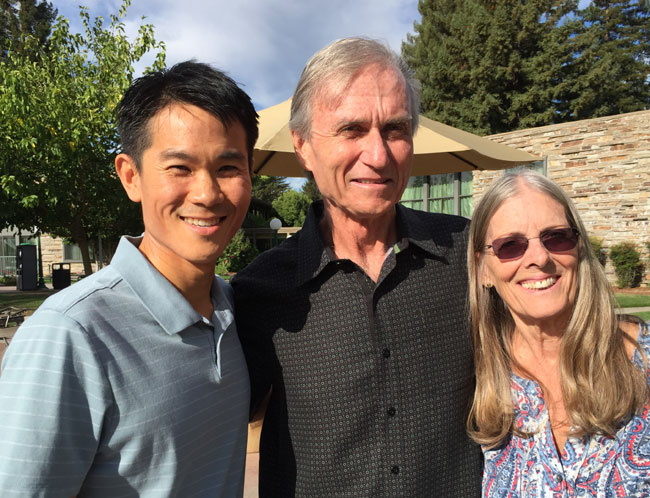
Above: Dr. Lim with Dr. John McDougall and Mary McDougall
I have often heard Dr. Goldhamer say that putting someone on a water fast for a period of time will certainly alter their taste buds and make them look at whole-food, plant-based food in a much more positive light.
Absolutely. Many patients who come here cannot “stomach” or tolerate the food when they first arrive. After they finish their water fast and begin eating again, they report that their first bite of steamed squash or their first sip of vegetable juice tastes absolutely divine!
What is the key to keeping people compliant with this program?
That’s the million-dollar question. One of the things we hope to do is more follow-up studies to really see not only how adherent patients are to this lifestyle, but also what interventions we could do to improve compliance. Behavioral change is one of the most difficult things and, in fact, it is one of the areas that I focus on a lot in the lectures that I give here at TrueNorth, at the McDougall Program, and Kaiser Permanente.
There are several things that I have found to influence compliance, but one of the biggest is social support. If patients are able to find people who share their passion for plant-based eating, as opposed to people who are going to denigrate them for eating that way, that is huge.
Another factor is accountability. I’ve found that some patients do well, at least during that initial phase when their new habits are still taking hold, if they check in on a regular basis with someone: a close friend, a health coach, or their physician.
A third huge factor is what I call “environmental shaping,” and by that I mean they need to get rid of everything in the house or their immediate environment that could possibly tempt them to stray, and instead replace it with healthy, whole-food, plant-based foods that they can eat to their heart’s content.
The last factor is that people have to “know their why,” meaning that they really have to understand why they are trying to achieve health. It could be because they want to be around to see their grandchildren graduate from high school, because they want to run a marathon, hike a mountain, or simply feel better day to day. The more they can tap into that underlying reason that gets them fired up and motivated, and remind themselves of this on a day-to-day basis, the more they’ll be able to stick to their new dietary patterns.
Do the better foods and recipes available today make adherence to this lifestyle easier than ever before?
Yes. Recipes from people such as Jeff Novick, Katie Mae, Cathy Fisher, Chef AJ, and Ramses Bravo make eating plant-based both easy to prepare and more delicious than ever. That said, I would say that the foods that we should be eating today are actually things that we were eating a lot more of in the past, like fresh fruits and vegetables and less processed foods. As Michael Pollan says, “When you’re trying to figure out what foods to eat, eat something that your grandmother would recognize.” So I actually think we’ve had access to these foods all along. In some ways we’ve made it harder to eat these simple nutritious foods due to the rise of the fast food and processed food industries.
So do you believe that salt, oil, and sugar are the foundation of “the pleasure trap,” and that if people would simply cut them out completely they would avoid it?
Yes, I agree that salt, oil, and sugar are the foundation of “the pleasure trap.” Thus, when I see a patient and he or she admits to eating a large bag of M&Ms or an entire package of cookies in a single sitting, clearly the patient has a food addiction, and in such cases I agree with Dr. McDougall’s mantra that “moderation is not an option.” That said, I think certain healthy individuals without underlying medical conditions are able to eat a piece of candy or put a small amount of salt on their baked potato every so often without it triggering a dangerous cascade, and for these people moderations is an option. I acknowledge that this is not a view that’s shared universally by other plant-based physicians, but I tend to be more moderate in this regard. I am open to the possibility that my views will continue to evolve with time. In the end, my advice for each patient is an individual assessment that I make based on the history and medical conditions that the patient comes to me with.
Since you have been able to make this remarkable conversion and evolution in your medical thinking, are you optimistic that the light will go on for more of your colleagues?
Yes. I tend to be an optimistic person by nature, but also I have some evidence to back it up. One of the things I point to is the number of Kaiser healthcare providers who have attended The International Plant-Based Conference put on by the Plantrician Project that is now in its fourth year. The first year it was held, there were less than 5 Kaiser employees that came. The second year, which was in 2014, the same year that my father and I first attended the conference together, there were around 40 Kaiser people. Last year, in 2015, there were almost 100 Kaiser providers! So, in the space of three years we’ve gone from 5 to 40 to 100 Kaiser employees, and who knows how many there will be this year. So it definitely strikes me as a movement that is rapidly picking up momentum.
One interesting thing to note is that among the 100 people that came this past year, virtually all the medical specialties were represented. For example, at a special dinner held during the conference for the Kaiser folks, I just happened to sit at a table with a pulmonologist, a psychiatrist, a nephrologist, and an internist, and then there was myself from family medicine. On top of that, multiple disciplines were represented. In addition to Kaiser Permanente physicians, there were Kaiser nurses, nurse practitioners, registered dietitians, occupational therapists, social workers, and more. It is trends such as this that I have witnessed in just a couple of years that give me great cause for optimism.

Above: Dr. Lim with his parents
I believe you mentioned that your father was at the last Plantrician Conference. Tell me more about him and the rest of your family.
My father is a wonderful role model for me. He is a retired OB-GYN. When he talks to me about his career he always says nostalgically, “There was never a day I woke up and didn’t look forward to going to work.” And that’s a tough bar to meet. I think it was one of the reasons I kept jumping from career to career, continually seeking that same degree of career satisfaction and fulfillment. It felt really good to finally tell my dad that I too wake up excited to go to work each day. On a side note, it has been a lot of fun collaborating with my dad. In his retirement, and since becoming plant-based himself, he has started lecturing and giving presentations at venues all across San Diego, such as the Rotary Club, Town Council meetings, and vegetarian or vegan-related conferences. I even had him give a guest lecture at True North and Kaiser during his most recent visit to Santa Rosa, and he was a hit! Both groups demanded that he come back to give a repeat performance.
As for my mom, she is a gifted acupuncturist with a healing touch, and she has played a pivotal role in raising me to be the man I am today. I will be forever grateful to her because, had she not forwarded me the email announcing the job opportunity to work with Drs. McDougall and Goldhamer, I would likely not be having this conversation with you!
I have one older brother who is also a physician. He no longer practices clinical medicine and is now a very successful biotech entrepreneur with a focus on developing medications to treat cancer. He is a role model for me and is my closest friend; we were each other’s best man at our weddings.
Finally, my wife and two kids, ages eight and four, are the joys of my life. They have been very supportive of me and excited for me as I embark on this journey.
They have to love having you in one place as opposed to living all over the world?
They definitely love having me in one place and in one career!
So, is it fair to say you’ve found your “true north” at TrueNorth?
Yes! Often now when I give lectures at Kaiser, TrueNorth, or the McDougall program, I tell the audience that it’s the first time in my life that I can say that 50 years from now I truly believe that I will be devoting my life to this same cause. I could never say that before. I am just so grateful that I have found this calling in life.
I think it was the late great P.T. Barnum who said, “If you love what you’re doing, you’ll never work a day in your life.”
Absolutely. I can attest to that. Amen!
What do you do when you’re not working?
My favorite hobby is tennis. I’ve been playing since I was a kid. This last year I had my best season ever playing competitive USTA singles, and went undefeated during the regular season. I attribute my successful season in part due to my improved overall health since going plant-based.
My Christian faith is central to my life and everything I do. I thank God every day for his many blessings upon me and my family, and rely on His strength during challenging times. We attend weekly services at a vibrant local church and take part in a community group that meets regularly.
So, you’ve been a teacher, you’ve been in AmeriCorps, you’re a lawyer, you’re a doctor. Do you plan to write a book about all this?
No immediate plans, but perhaps someday. For now, I am content to simply devote myself to being a whole-food, plant-based doctor.
***
For more information about the National Health Association and to join, click here.
This article originally appeared in the Spring 2016 issue of Health Science magazine, the member magazine of the National Health Association.
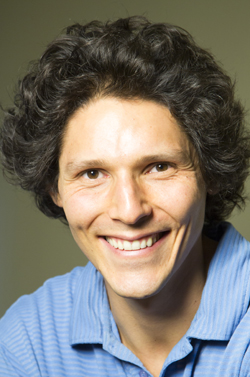
If we are unskilled at the squat, we may have trouble getting in and out of our bed or car, tying our shoes, or picking up things we’ve dropped. In addition, climbing stairs, playing sports, and standing up after a fall can feel prohibitively challenging and painful. Each of these limitations can ultimately lead to diminished independence.
Athletes must also be able to execute an excellent squat, enabling basketball players to shoot free throws and downhill skiers to navigate moguls. Though its application may differ, the squat’s necessity is ubiquitous.
So how do you do a squat? Let’s break it down:
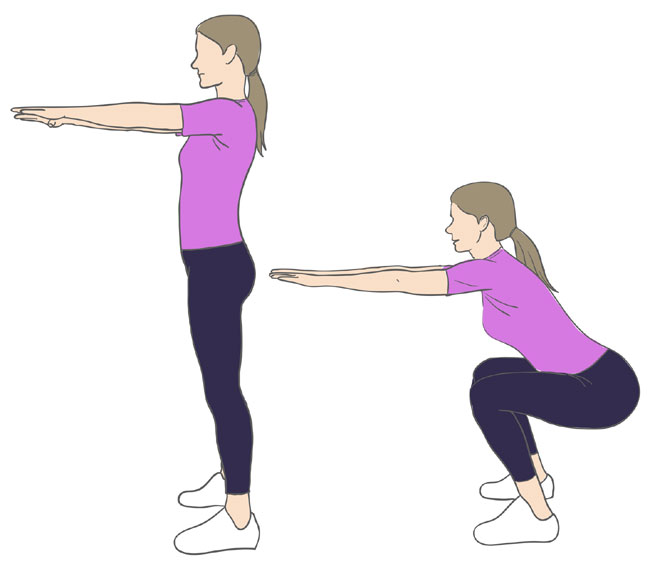
Performing certain basic movements are as essential to our musculoskeletal health and quality of life as eating certain basic foods are to the vitality of our entire body. Squats are one of the tried and true exercises that all bodies were built to perform—they are the very definition of functional.
Whether I’m training an offensive lineman or my grandmother to squat, I must first consider their respective needs. An offensive lineman needs to plow through the brick wall of defensive linemen before him. My grandmother, on the other hand, would love to be able to stand up easily. Both must learn to perform the same squat, though the squat must be made more difficult or “progressed” for the lineman, and easier or “regressed” for my grandmother. Both must become adept squatters to accomplish their respective goals.
Progressing the offensive lineman’s squat is actually fairly simple. Its challenges are more mathematical, involving altering the weight used, the number of sets and repetitions performed, and/or modifying the speed of the movement. The squat stays the same, but the parameters change. Regressing my grandmother’s squat, however, might be met with more controversy.
Many trainers and coaches would prescribe different movements to strengthen each respective muscle involved in the squat. They might have my grandmother work through the equipment at her fitness center, using the knee extension machine for her quadriceps, the leg curl machine for her hamstrings, and the hip extension machine for her glutes. Their rationale would be that by individually strengthening each major muscle of her upper leg, her squat will improve because the pieces are stronger. Let’s call this the “Parts” approach since it aims to improve each disparate part of the system.
Another strategy is the “Whole” approach, which I like. It requires the whole body to move as one to accomplish small portions of the end-goal movement. I would teach my grandmother to squat, with impeccable form, to a shallow depth, perhaps just an inch or two down from standing. I might standardize her range of motion by instructing her to lower her bottom onto a stool or other surface of appropriate height so that her buttocks touch the surface on every repetition. As she practices and becomes increasingly adept, I would deepen her squat while ensuring that her movement retains integrity. To achieve more depth, I might stack several phone books on a chair, removing them one at a time as she gets stronger.
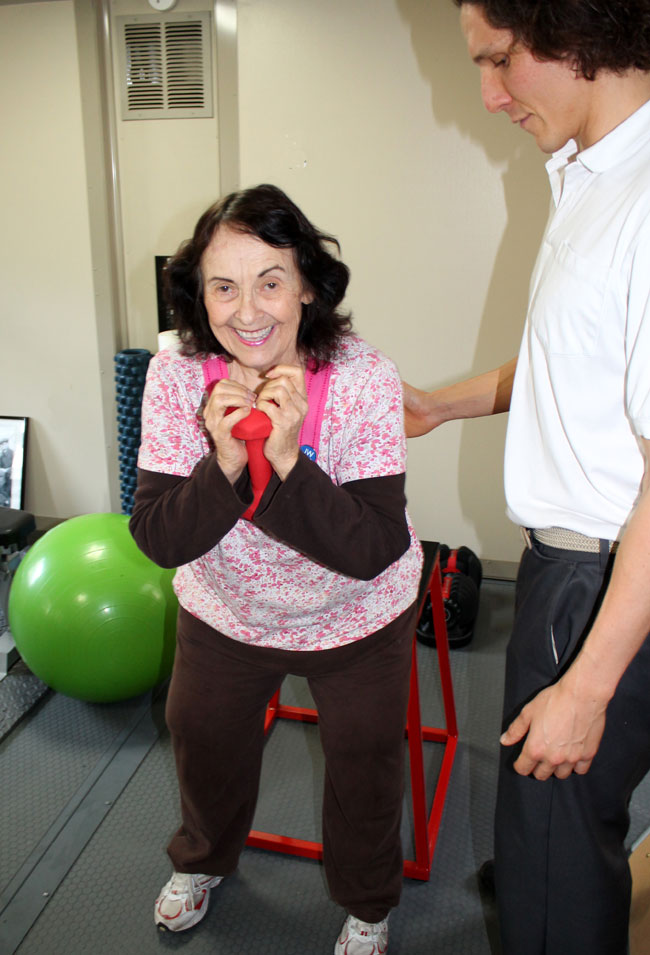
What distinguishes the “Parts” and “Whole” strategies? Most obviously, the Parts approach uses machines while the Whole approach demands nothing more than a body in space. Second, most weight machines permit movement in just one plane, but the squat requires simultaneous movement in more than one plane: grandma’s muscles must continually work to maintain her body position, improving her balance and stability in the process. This is clearly an added bonus for an older woman whose demographic already places her at heightened risk of falls and hip fractures.
Another distinction between the two approaches is that all of the Parts exercises are considered “open chain.” This means that only the limbs move while the rest of the body stays still. To illustrate this, remain seated and simply extend one of your legs. Did your belly button move? No. Now stand up from your chair. Did your belly button move? Yes. As a general rule, if your belly button doesn’t move during an exercise, the movement is considered “open chain.” If your belly button moves, the movement is called “closed chain.”
Many movements in life are open chain, like brushing your teeth and waving hello. These require minimal use of core musculature and most people have no problem performing them. Closed chain movements like the squat, on the other hand, are more involved and usually more difficult. They use more musculature and translate more effectively to challenging movements like lifting a box off the floor and walking up a flight of stairs.
The differences between the Parts and Whole strategies continue. Parts movements are “isolated,” requiring the use of only one joint. Whole movements are “compound,” requiring more than one joint. In general, the more muscles we engage per movement, the more bang for our buck. Whole movements set off a superior hormonal response, causing more calories to be burned and more muscle to be built.
The two approaches also impose different demands of time and space. The machine-training route requires my grandmother to perform three exercises to train her lower body. The squat, a single exercise, trains these same muscles and others, too. Furthermore, the machine program adds the barrier of my grandmother needing to go to the gym. In contrast, she can easily perform body weight squats at home or while travelling.
For a movement to earn its place at the foundation of a training program, it should satisfy all three criteria: close chain (belly button moves), compound (uses more than one joint), and machine-free (or free-standing).
Let’s look at some specific benefits and recommendations for executing squats by children/adolescents, adults, and older adults.
Children and adolescents:
Benefits:
Recommendations:
Healthy adults:
Benefits:
Recommendations:
Older adults (65+ years old):
Benefits:
Recommendations:
Squats offer a highly effective means to increase fitness and facilitate activities of daily living with ease and without pain. The squat and its variations can be found in movements as general as sitting into and standing up from a chair, and as specific as a jump shot in basketball.
Squats require no equipment, strengthen the muscles of the core and lower body, and when done correctly, build bones, preserve joint range of motion, and improve our state of mind. Squats are undoubtedly an all-star exercise that should be incorporated into each of our lives.
Resources (for applications):
Children and adolescents
This article originally appeared in the Winter 2016 issue of Health Science magazine, the member magazine of the National Health Association.
Gracie Yuen D.C.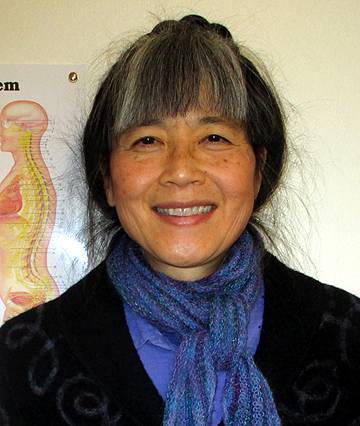
Chronic pain is a nemesis that afflicts many people. Consider these scenarios:
What do these four individuals have in common? They all have a mysterious pain that remains long after having been to numerous conventional and alternative doctors and practitioners. They have tried everything they can think of, only to be left with their pain medications, which help some, but don’t get to the cause.
What they don't know is that there exists a very common but little known cause of pain that often lurks in the tissues and goes unnoticed during imaging or when lab tests are done. It has been studied and elucidated at great length by astute medical doctors of the past and present, but is largely neglected by the medical community of late.
This pain lurking in the tissues is not a serious condition, but it can completely hijack a life for long periods of time. Amazingly, it has a fairly straightforward remedy. When treated properly, the relief can be absolutely stunning.
Let's explore chronic pain and, specifically, the cause of this little known mysterious and enigmatic pain, and what can be done about it.
Click here to read the entire article as a PDF, complete with detailed charts.
By Mark Huberman
This interview originally appeared in the Winter 2016 issue of Health Science magazine, the member magazine of the National Health Association, of which interviewer Mark Huberman is the president.
Dr. Alan Goldhamer 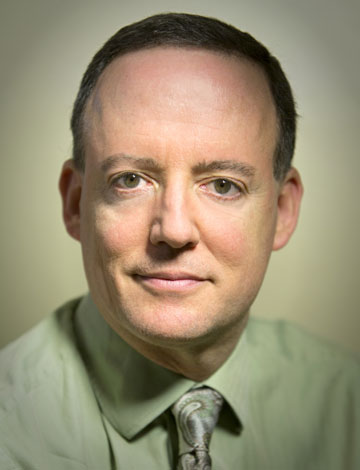
MH: Nearly everyone that discovers the hygienic way of life has a story about their journey. What is yours? Was there a health crisis? Was there a particular book that inspired you?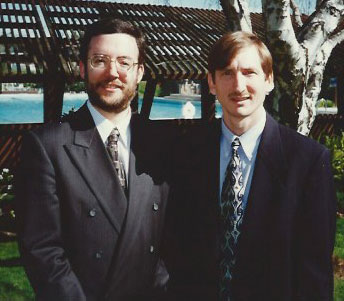
AG: Originally, my interest in health was motivated by a desire to beat Dr. Doug Lisle (pictured left) in basketball. Back in elementary school he was not yet “Dr. Lisle,” he was just Doug. Unfortunately, he adopted the same health-promoting diet as I did, and my efforts failed. He still beats me handily in basketball—but it did get me interested in improved health.
When was your first NHA/ANHS conference and what brought you there?
It was 40 years ago. I had decided to pursue a career in health care and was interested in learning more about the use of fasting.
Was there a particular speaker or NHA leader who influenced you?
I was impressed with Dr. Alec Burton and his presentations on hygienic philosophy and fasting.
What role did the NHA play in your professional development?
My exposure to the thinking of the doctors was very helpful, and I’d say even critical, in convincing Dr. Burton to allow me to come to Australia to train.
What made you want to go to chiropractic college?
The late Dr. Gerald Benesh convinced me that it was necessary to gain training as a primary care doctor in order to have the basic skills needed to properly advise patients on how to manage their health.
Is that where you met your wife, Dr. Jennifer Marano?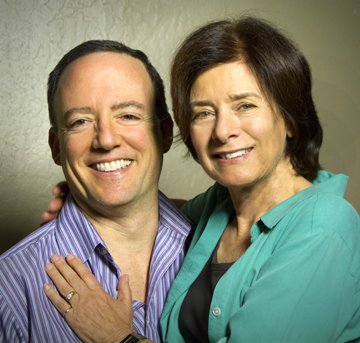
Yes. Jennifer transferred to the school I was attending, and I fell in love with her shortly thereafter! (Pictured right)
You had the extraordinary fortune of studying under the late Dr. Gerald Benesh and then under Dr. Alec Burton. Is that right?
Yes, I was incredibly fortunate. Both men were highly instrumental in my education.
What did you learn from Dr. Benesh?
Dr. Benesh taught me that the greatest threat to my ability to practice was well-intentioned but ignorant doctors and government officials.
What about Dr. Burton?
Dr. Burton taught me how to get sick people well and help healthy people stay that way.
What led you and your wife to start your first fasting institute, the Center for Conservative Therapy, in Penngrove, California, and who were your first professional colleagues?
I had the intention of starting a healthcare facility from the time I was attending high school with Dr. Lisle. He joined Jennifer and me shortly after he completed his training as a psychologist. Our first intern, and eventually first staff doctor, was Alec Isabeau, who joined us almost 30 years ago.
When did you move to your current location in Santa Rosa, California, and how did that come about?
We searched nationwide for the best place to live and set up a facility. We took many things into account, such as weather, air quality, water access, safety, access for patients, cost of property, medical-legal considerations, and acceptance of alternative medicine. The best place in the country turned out to be Santa Rosa.
Why did you change the name to the “TrueNorth Health Center”?
One of our patients who owned a very successful marketing company donated his services to help us come up with the most appropriate name for our facility. There are many directions one can travel to try to attain health, but one direction is more effective and efficient than the others: True North. This is the direction we try to guide our patients.
You have gone through a number of expansions. Tell us about the latest?
We recently gained control of five buildings adjacent to our 26,000-square- foot main facility. This allowed us to transfer most of our medical and administrative offices to these new buildings and remodel the vacated spaces into patient rooms. This has dramatically increased our capacity to our present 59 private patient rooms. We also have a dozen of our staff living in an adjacent apartment building that we have taken over.
You have an extraordinary large staff, several of whom have been with you for a very long time. Tell me about some of them.
Tell me about some of the other non-physician staff members and what they offer?
What is the advantage to having medical doctors on staff?
Having the best and brightest medical doctors allows us to help patients with a wide variety of challenges more effectively and efficiently, and most of all, safely.
You and Dr. Lisle authored the groundbreaking book The Pleasure Trap. When did it come out and what is its premise?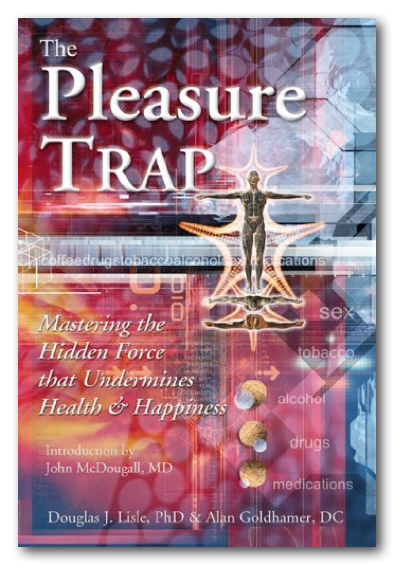
It was published in 2006. The book offers insights into the factors that make us susceptible to dietary and lifestyle excesses, and presents ways to restore the biological processes designed by nature to keep us running at maximum efficiency and vitality. When people eat foods that contain chemicals, mainly sugar and oil, the brain becomes artificially stimulated by dopamine secretions, which leads to overeating, obesity, and the diseases of dietary excess. The “pleasure trap” is largely why people are fat and sick, and it is an addiction that is exceedingly difficult to escape. We use fasting, in part, to help patients escape the pleasure trap.
Do you and/or Dr. Lisle have another book in the works?
Dr. Lisle is working on a new book about self-esteem that I know will be outstanding!
Perhaps one of the most unique aspects of TrueNorth is the internship opportunities that are offered to graduate students and physicians to become proficient in fasting supervision. Who is eligible, how does the program work, and how many interns do you take per year?
We are currently training about 30 doctors per year—M.D., N.D., D.C., D.O., and N.P.—in one-, three-, and twelve-month programs. Our internship/residency programs allow doctors to learn how to use nutritional medicine, including fasting, to help people get well. For many doctors this is the first time they have actually seen people recover their health. Several hundred interns have trained at TrueNorth over the years.
Why is an internship so important?
For many doctors, this is their only chance to learn how to use this approach.
Why don’t most folks who intern with you open fasting institutes of their own?
There are still major roadblocks to opening and running a facility. First, it is very expensive to develop a facility, to maintain the staff, and to attract the volume of patients needed to make it sustainable. Second, there are still medical and legal challenges to overcome. However, times are changing and new facilities may come on line in the future.
Most people probably think of TrueNorth as a fasting institute; but do people come to the center who do not fast?
In addition to medically supervised water-only fasting, or modified fasting on juices, many of our patients come to work with one or more of our doctors for assessment or treatment. Others come to take a break and get taken care of. People come to eat healthy food and be with other like-minded patients while attending lectures, cooking classes, and fitness training. Some business people also stay with us because our rates are lower than the hotels in town, and they get all their meals included.
Speaking of fasting, the most famous book ever written on the subject is unquestionably Dr. Herbert Shelton’s Fasting Can Save Your Life. Was he right, and is it really true?
He certainly was right, and it is true!
What actually happens during a fast, and why do most non-hygienists confuse fasting with starving?
Fasting is the period of time after you stop eating where you live on your reserves. Starvation is the period beyond this, where you keep going and burn vital tissues, and eventually die. We promote and practice fasting, not starvation.
What about juice fasting? Can this be an alternative form of “detoxing” for people who lack the time or resources to undertake a water fast? What are its limitations?
Juicing is a form of modified eating. It may be helpful in some circumstances, but it is not fasting. Water fasting introduces a unique physiological adaptation that is quite unique. Changes occur more effectively and efficiently in water fasting then during modified approaches.
In your 31-plus years, how many patients have water fasted under your care?
Believe it or not, we have supervised the fasting of over 15,000 patients!
What conditions respond positively to fasting, and are there some conditions that simply will not respond?
The conditions caused or made worse by dietary excess respond the most consistently to medically supervised water-only fasting. They include cardiovascular disease, including high blood pressure, obesity, diabetes, and a host of autoimmune disorders. Patients who do not respond well to fasting include those with undue fear of fasting, wasting disorders (where deficiency or depletion are predominate), and conditions where kidney disease or arrhythmia might make fasting problematic. We always try to appropriately phase medications off before beginning fasting, with a few exceptions of certain replacement therapies.
I know that a particular interest and priority of yours has been documenting not only the efficacy of fasting but also its safety; you have conducted several studies attesting to both. How many studies have you conducted and what do they show?
We have a number of publications. A landmark study, “Medically Supervised Water-only Fasting in the Treatment of Hypertension,” conducted with the help of Dr. T Colin Campbell of Cornell University, involved fasting 174 consecutive patients with high blood pressure. We demonstrated the largest effects of any study ever conducted, with an average reduction of over 60 points in those patients with stage 3 hypertension. A second study of moderate-high blood pressure conducted a year later was equally impressive. We have also published case reports in peer-reviewed journals on the use of fasting to treat subacute appendicitis, which also showed impressive results.
Lots of folks within the progressive health movement talk about the benefits of a whole-foods, plant-based diet, but you are most famous, for coining the term “vegan SOS,” which stands for a vegan diet without added salt, oil or sugar? Why should we avoid these three common staples of the American diet?
I suggest reading The Pleasure Trap for a comprehensive answer to this important question. The short answer is that these chemicals artificially stimulate dopamine, leading to an addictive response which results in overeating and the development of obesity and the diseases of dietary excess.
What are your thoughts about the abundance of salt and sugar substitutes?
I do not recommend them. In addition to their own individual chemical challenges to the body, they foster an unhealthy dependence on highly adulterated foods. These processed substitutes do not facilitate “taste neuroadaptation,” meaning that as long as someone is consuming them, health-promoting foods will not taste good and so people will avoid eating them.
Are there any good oils? What about olive oil, which is so widely championed by advocates of the Mediterranean diet?
No. I do not recommend any. All oils are highly processed and concentrated food by-products. They have an unnaturally high caloric density that will result in a host of chemical challenges and, inevitably, result in overconsumption. I recommend avoiding all oils except for the engine of your car.
Flavored vinegars have become quite the rage within the whole-foods, plant-based diet world as an alternative to oil in salad dressings. Any concerns about their general use?
I prefer the flavor of the actual vegetables; but if you are able to handle these high-acid products, I suggest consuming them in moderation.
Do folks that follow a broad-spectrum, vegan, SOS-free diet need supplements? If so, which ones?
Yes. I recommend 1,000 mcg of methylcobalamin (B12) once a day. If testing indicated a deficiency that was not correctable with diet or sunshine, I would consider other supplements on an individual basis. But we always prefer to obtain our nutrients from a health-promoting vegan, SOS-free diet.
Are you an advocate of consuming organic foods whenever possible?
Yes. I believe that organically grown foods can minimize exposure to potentially harmful chemicals. Additionally, we should support farmers who use health-promoting practices, which are not only beneficial to people but also our planet.
Tell me about the TrueNorth Kitchen and Chef Ramses Bravo, and how he and his culinary creations help folks stay on the straight and narrow?
Not only does our outstanding chef (pictured right) provide delicious food for our patients and staff, but we also have a walk-in deli service for our patients in the community. All foods are prepared without salt, oil, and sugar.
Is it affordable to stay at TrueNorth?
TrueNorth remains remarkably affordable. Our rates for a private room with a shared bathroom start at $149 a night. This includes a private room, all fasting supervision or meals, our educational program three times a day, twice-daily visits with the doctors (during morning and evening rounds), personal laundry service, and free phone and Wi-Fi.
Will health insurance cover any of the costs?
The medical exam, personal treatments, and laboratory testing are covered by Medicare and private insurances.
You recently created the TrueNorth Foundation. What are its goals?
The TrueNorth Health Foundation is our 501(C)(3) nonprofit organization whose mission is public education and research. Our most recent paper was published by the British Medical Journal. In the case report, we detail the resolution of a patient with stage 3 follicular lymphoma (lymph cancer) who has undertaken a 21-day water-only fast followed by a vegan, SOS-free diet. You can view this article on our website at healthpromoting.com/learning-center/articles. We will also be releasing a major study on fasting safety, as well as a number of papers evaluating outcomes of data we and Dr. Scott have collected that we have analyzed. We recently formed a collaboration with Dr. Luigi Fontana and the folks at the Buck Institute, and expect to begin recruiting for a research project that will evaluate the effect of fasting in reversing biomarkers associated with aging, cancer formation, Alzheimer’s disease, autoimmune disease, and changes in the microbiome.
We have been friends and colleagues in the NHA for a very long time, and I know the reputation you enjoy (like mine) of being very strict when it comes to adherence to the natural hygiene diet? Are you as diligent as they say?
Fortunately, I eat 20 of my 21 meals a week at the TrueNorth Health Center, so there is very little opportunity for temptation. When I was 16 I decided to do an experiment, where I adopted a vegan diet and avoided any drugs and highly processed foods. I am 41 years into this experiment, and so far it seems to be working.
Finally, I know that there is much more to a healthy and productive life than diet, and I would like you to share with your readers what you and Jennifer do to keep balance in your life with all of the demands that TrueNorth imposes?
I play full-court basketball three mornings and one evening a week, and I hike with Jennifer regularly. I also do a daily meditation practice. I believe that stress is like Christmas: it is better to give then to receive, and I try to be generous!
Thanks for your years of contributions to the NHA and the Natural Hygiene health movement that it continues to lead.
Thank you, Mark, for all that you do as well.
This article originally appeared in the Fall 2015 issue of Health Science magazine, the member magazine of the National Health Association.
Medicine wasn’t always what I wanted to do. Although, nurturing, healing, and creating health-promoting experiences are probably hard-wired into my genes.
My grandmother raised me at a young age (pictured at right), which was a great beginning for me as a child. We lived on a beautiful retreat in New York’s Catskill Mountains. My grandparents emigrated from Hungary and created a safe haven for other Hungarians who immigrated to America after the Hungarian revolution in the fifties and sixties. There was always plenty of room to run around and get exercise, clean mountain air, good farm-to-table food (although it was meat- and potato-heavy), and lots of love from family and friends. These are the foundational healing principles that have followed me throughout my life.
In middle and high school, my family would always meet around the dinner table, which was full of traditional Hungarian dishes, such as stuffed cabbage, chicken paprika, and hazelnut cake. My father impressed upon me and my brother the importance of family time, where we could all put our concerns on the table and talk openly. I was lucky that my father and mother loved us enough to break away from their busy lives to sit down with us and listen. I would actually want to come home from friends’ houses just so I could have dinner with my family; it had a sacred nature to it.
I played sports every season, and was always active with practice, games, school events, friends, and homework. Looking back now, all of these things were the right ingredients for my happiness. The life principles that were woven into my childhood, I later realized, were the very foundations of hygienic medicine: pure water, emotional poise, good homemade food, movement, sunshine, fresh air, and support and community.
Looking for a Career
College was where my life took some sharp turns and really made me tune into myself. I attended Rutgers University in New Brunswick, New Jersey, where I was pre-med, having decided that becoming a doctor would be my way to really make an impact and change the world.
I learned a lot in college about health in terms of lifestyle choices. This was the first time I ate a variety of foods and meals that were not home-cooked or Hungarian. Consequentially, I gained over 15 pounds. I also started drinking alcohol for the first time in my life; it was the college culture. I became unhappy, overweight, and fatigued most days. I remember one day waking up and not being able to move my body because it felt so heavy. I thoughtI was paralyzed, and so I called my father.
My parents drove six hours that day to see me. I was prescribed antibiotics and was fine. I was likely suffering from a combination of alcohol poisoning, adrenal fatigue, and an unhealthy diet. I made the conscious decision going forward to get back into shape. I bought a bike and rode the two miles to and from my gym every day. While at the gym I started to read fitness, yoga, and health magazines, and I was fascinated by all the research coming out about exercise, food, and herbs. I was excited to know that someday I would be helping others achieve optimal health.
During my final year of undergraduate schooling, I completed an internship at a medical center in New Brunswick, and it was there that I realized that being a doctor wasn’t what I thought it was going to be. Patients didn’t leave feeling better most days, and nurses cared for the patients more than the doctors did.
Overall, the hospital was a very negative place. No one looked like they wanted to be there. Of course no one wants to be sick, so the patients didn’t want to be there; but there was an overall negativity to their so called healing. Additionally, the staff didn’t look pleased or even remotely satisfied with their professions. I didn’t expect people to be smiling all day in a hospital, but there is a sense you get around people when they are actually doing what they want to do and are happy in their work, and that wasn’t what I found there. I wanted to practice a different kind of healing; the “feel good at the end of the day” kind that actually promoted good health. My internship was a wake-up call, which resulted in me putting my medical path on hold to figure out if I was more suited to another career.
Taking a Detour
One day in the mailroom at college I saw an advisement for “Australearn,” a program that allowed students to travel to Australia for a year and learn a trade. Since I was at a crossroads, about to graduate with my B.A., and with no career plans to speak of, I decided to go to Australia. I took a marketing and advertising internship at an organization called Surf Life Savings. This was probably the best year of my life. The work was exciting because it was new, and I was maintaining my daily health rituals, including walking and exercising, getting fresh air, travelling, experiencing a new culture, meeting good people, and eating good food that was mostly plant-based.
When I returned to the U.S., I got a job working in a marketing and advertising firm in Manhattan. Even though I was health-minded I still found it a challenge to practice a consistently healthy lifestyle. I knew what health looked like for me: meditation, yoga, Pilates, eating good food, not drinking alcohol, and trying to maintain a balance between work and relationships. I tried to follow the “healthy yellow brick road” but ended up detouring constantly. In that time, however, I did become a certified Pilates mat instructor, a holistic health counselor, I studied various nutritional modalities at the Institute for Integrative nutrition, and I also became a self-proclaimed budding herbalist.
Over the course of eight years, I worked at three different advertising/marketing agencies, and in between each job, I remember thinking, “What do I really want to do with my life?” I eventually found myself lost and unhappy with my career and life. I remember coming back home after visiting a friend in Spain, and I cried the entire way because I was so miserable; I didn’t want to go back to my life. My inner compass knew that as much as I loved Manhattan, I would have to leave, and probably not come back. So that is what I did—I packed up my life and headed upstate to my parents’ house to regroup. There I was able to go for walks in nature every day, and I started teaching Pilates at a local gym. But I still connected with my earlier desires to change the world. I wanted to heal the earth and help people live happy, conscious, and meaningful lives. So, I began my search once again.
Finding What I Wanted
I thought that I had gone astray by doing pre-med in college and not following my interest in truly helping others, and the world. After some online searching one day, I found Bastyr University, a naturopathic medical school in Washington state. As I read more about the school, naturopathic medicine, and the philosophies and principles that governed medicine, I realized that it was everything I wanted. I remember being so excited that I had found it—the thing I was supposed to do for the rest of my life!
I went on to graduate from Bastyr University with my Doctorate in Naturopathic Medicine. But for me, it didn’t stop there. During my training I decided to combine (with my doctorate) a master’s degree in oriental medicine and acupuncture. I loved the philosophy and the commonsense brilliance of oriental medicine, and I felt that it would be the right combination for my practice.
During this time I also became interested in oncology. I worked for a few years at BIORC (Bastyr Integrative Oncology Research Center). It was a fantastic experience. I worked with Dr. Leanna Standish, a leading researcher and clinician in naturopathic oncology. In addition to the clinical rotations I did (at Bastyr health clinic and associated hospitals and health clinics), I was able to mentor with some amazing naturopathic physicians in their private clinics. I found that the people I was drawn to all had a beautiful ability to be present with their patients and to use the modalities of our medicine while truly living up to the health-promoting principles of naturopathic philosophies. These doctors worked with their hands, met the patients where they were in their lives, and guided them toward healthier lifestyles while intelligently bringing in supplements, herbs, and/or pharmaceuticals when needed.
TrueNorth
I first heard about TrueNorth Health Center when Dr. Alan Goldhamer came and spoke at our school about water fasting in one of our therapeutics classes. I remember thinking that fasting made so much sense, and I questioned why I had never done it. I emailed Dr. Goldhamer asking if I could do an internship, but unfortunately they were only available for four-month-long stays, and due to my triple track at school (ND, acupuncture and Chinese herbs) I didn’t have the month to take off.
When my residency training began, I had my heart set on doing more cancer care and was interviewing at Cancer Treatment Centers of America on the east coast. I was also following my husband as he had a prospective job in New York. “Serendipitous” is the word I would use for my landing at TrueNorth. My husband’s opportunity in New York didn’t come to fruition, and instead he ended up taking a job in Calistoga, California. Around the same time my husband took his new job, the residency director said that the residency at TrueNorth had opened up again. TrueNorth was only a 30-minute drive from Calistoga, so I came down and interviewed, got the residency, and here I am one year later.

In my practice at TrueNorth Health Center, I help patients every single day achieve optimal health. I have integrated the principals that I learned at Bastyr into my work; they are the “bricks” that create a solid foundation for an overall healthful life; without them the tools and modalities that I learned in medical school could not stand alone.
Today, the six principles that steer my work with my patients are: (1) do no harm, (2) use the healing power of nature, (3) identify and treat the cause, (4) treat the whole person, (5) teach the principles of healthy living, and (6) focus on prevention. This provides a framework for my interactions with my patients. This brings me to the other difference between naturopathic and allopathic medicine: In naturopathic medicine there are so many healing modalities beyond just pharmacology, including botanical medicine, nutrition, hydrotherapy, manipulation, homeopathy, cranial sacral therapy, and counseling.
In my residency position at TrueNorth Health, I perform a variety of functions where I am learning about health promotion as well as how to run a business. I coordinate and organize the lab draws that are essential to the care and safety of our patients. I also train, mentor and organize the medical internship program, which brings in students and professionals from all medical professions to learn about water fasting as a healing modality. I also work with patients one-on-one in two ways: I guide and manage patients through their cleansing/fasting experiences, and am also building an out-patient practice so that I may see more people from the community (who may not be staying at TrueNorth). Second, as part of the medical supervision offered at TrueNorth, we see patients twice a day to monitor their progress. I am a part of the in-patient rounds team as well. All of this varied work gives me wider exposure to different types of people and their conditions.
I find myself smiling from ear to ear most days because I have been fortunate enough to have found TrueNorth Health. When I first arrived, I commented to Dr. Goldhamer that the center was actually a naturopathic clinic at its heart. Each day presents me with new challenges, but I am doing the kind of work and healing that drew me to naturopathic medicine. I love my job, and I love my patients. I feel this with everyone who comes to TrueNorth; we are, as a whole, making a big impact on the health of our community and the world.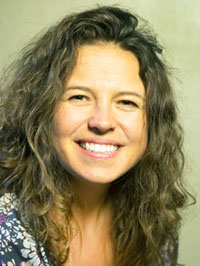
It’s so gratifying to know that at the end of the day people are getting better and feeling healthier by adopting foundational health practices, which are at the heart and soul of naturopathic medical teachings. There is no better feeling than to have someone say at the end of their stay, “Doc, you saved my life.” Although, based on personal experience, it’s even better to see them three months later with a huge smile on their face, saying, “I’m still feeling great and still going strong!”
By Mark Huberman
This interview originally appeared in the Spring 2015 issue of Health Science magazine, the member magazine of the National Health Association, of which interviewer Mark Huberman is the president.
Dr. Erwin Linzner 
MH: When you were first introduced as a new hygienic physician to the readers of Health Science magazine way back in January of 1997, I recall that your door to Natural Hygiene came from reading Fit for Life. What was it about that book that you found thought-provoking?
EL: It was an accumulation of things. I’ve learned over the years that we always reject information at first, even if it’s true, and I did this in my twenties. I had a good friend who was eating plant-based; I’m pretty sure he was vegan. And he would make salads and baked potatoes for me when I’d visit him. Then I would go to McDonald’s afterwards. But then in my thirties, I guess I was about 34, I read the book Fit for Life, and it really made sense to me that we are designed to have an optimum diet, and if you deviate too much then things aren’t going to work as well. And that made sense to me, just like nobody puts sugar and dirt into their gas tanks; we shouldn’t be doing that either with our food. One day I said, “Okay, I’ll give this a trial for a full week,” and luckily for me I woke up after three days of plant-based eating and my energy just bounded; it was just phenomenal.
Were you having any health problems at the time?
Yes. I never had energy. I’d get up at 8AM but I didn’t feel like I was actually moving until about 11AM. And I had frequent cold, and would be out of work for two or three days. I knew something wasn’t right.
One of the great things for the NHA was that Fit for Life and its authors, Harvey and Marilyn Diamond, didn’t have an organization of their own, and so they referred people who wanted to gain more information about the program to us. Is that how you were introduced to the NHA?
That was it. I started getting literature from the NHA, about once a month, and then one day I got a flier that Dr. Alan Goldhamer was giving a talk in Santa Monica, and I became interested. Also on the program were Dr. Jennifer Marano and Dr. Alan Immerman. Dr. Goldhamer spoke about water fasting and getting people well with fasting and healthy eating. It made so much sense to me and got me excited about wanting to make a difference in people’s lives; so I decided to follow in Dr. Goldhamer’s footsteps and go to Western States Chiropractic College.
Were there there other books that you read that helped frame your thinking?
I, of course, read almost everything from Dr. Herbert Shelton, and I was particularly inspired by his book, Fasting Can Save Your Life.
After reading the book, did you undertake a fast yourself to fully understand the experience?
At the time, my wife needed it more than I did. So I thought I’d let her be the guinea pig. So I sent her up to Dr. Goldhamer.
What a generous husband!
Well (chuckle), she had a history of smoking and was a little overweight, so I said why don’t we send you up there to clean out a bit. She was open to it, and did quite a long fast of over 20 days at Dr. Goldhamer’s first facility in Penngrove, California, called the Center for Conservative Therapy.
Was that eye-opening for her?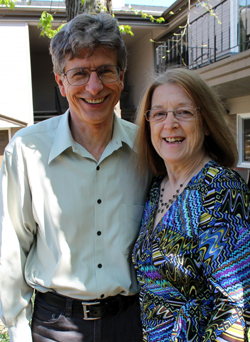
Oh, yes! It was eye-opening for us both. She lost weight and really looked radiant. It was just amazing. After that I did a fast as well, but only for about five days. (Dr. Linzner and Carolyn pictured at right.)
Do you remember the first NHA conference you attended?
I think it was Georgetown University back in 1994 right after I joined Alan.
Were there other hygienic physicians that you met who were influential in your thinking?
Two that impressed me a lot were Dr. Alec Burton and Dr. Keki Sidhwa. Believe it or not, on my bus ride from the airport I found myself sitting next to Dr. Sidhwa. It proved a wonderful opportunity to begin picking his brain.
How did you wind up working at TrueNorth?
After doing my fast at TrueNorth, I was really impressed with the work that Dr. Goldhamer was doing, so I said to him, “I went to your talk in Santa Monica last year, and it really motivated me to do this kind of work; so I am going to go to Chiropractic College to involve myself in the same kind of work.” To my surprise Alan said, “Great! As soon as you graduate, give me a call.”
And you did?
Indeed I did. Of course I checked with him as things went along to make sure he was serious about it and that he would still bring me on when I graduated. And he said, “Yeah, yeah, keep working. We’re waiting for you.” Immediately after graduating, he gave me the opportunity to do an internship, and when that was completed he made me part of the staff. It was a great experience.
I know that Dr. Goldhamer still offers internship opportunities to young physicians. Why is it important to do an internship in fasting supervision?
It’s the best, and probably only, way for doctors to actually learn what works and what doesn’t. And it’s pretty phenomenal to actually see people get well from diet changes and fasting. I’ve seen some pretty miraculous recoveries.
Are there any that really stand out in your mind?
There have been many. In my first year at TrueNorth I helped care for a gentleman in his forties who was a drug addict, obese, and in congestive heart failure. When he was dropped off at the center, he was huffing and puffing just trying to get to the door. And I remember thinking, “Oh boy, this isn’t good. We are actually going to fast this guy?” I think he was referred by a medical doctor in Santa Rosa who told him that this was his last chance to get healthy. And that if we couldn’t help him, there probably wasn’t anything that could be done for him. Because of his situation, he was prepared to do whatever we asked of him. I don’t recall how long we fed him before we started fasting him, but we fasted him about 34 days. Amazingly, after breaking his fast, this guy who couldn’t walk from his car to TrueNorth’s front door ended up walking up a significant hill nearby! He then started walking 10 miles a day and truly started a new life. It was really amazing to see.
During my recent interview with Dr. Frank Sabatino, he felt there was a great place for fasting and a hygienic lifestyle in the true recovery from addiction. Do you agree?
Yes, I do. However, people recovering from addiction are often tougher to manage. But if they’re motivated and are willing to do the hard work, they’re going to get better quicker.
Over your past 18 years at True North, are there other conditions that you’ve seen respond particularly well to fasting?
I remember a young woman, maybe in her late twenties, with severe rheumatoid arthritis. She could not reach her head to do her hair. She fasted close to three weeks and had a great result. I remember how excited she was when she was able to do her own hair again.
What do you think the power of fasting is?
Fasting does a lot of things, but the one big thing it does is rejuvenate the body. During a fast you are breaking down old tissue and diseased cells that actually get rebuilt with new material. You get enzymatic induction, and you clean out your arteries. Excess fluid and salt leave your system. And your immune system strengthens; not necessarily during the fast but certainly afterwards.
Do you think that everybody needs to fast, or that everyone would benefit from fasting on some level?
Yes, I think everyone could benefit from periodic fasting. Even if you eat a really healthy diet, I think every four to five years it’s a good idea to undertake a fast to cleanse the palate, detox, and give your body a rest from digestion in a way that will allow the body to heal.
Is there a danger for people fasting themselves, and is there a limit to how many days people can go without supervision?
Fasting of any significant duration should be done under supervision by a medical professional. This is particularly the case for people on medications, because dramatic things can happen during the fasting state. However, if you are not on medication, a fast of two or three days is generally safe.
Can people get off their medication following a period of fasting and diet modification?
Absolutely! I have probably seen a thousand patients with hypertension who had normal or near normal blood pressure after fasting and no longer needed medication. I can count the number of failures on one hand. That’s pretty phenomenal. And even if they don’t get full resolution, they still see substantial improvement. The same is true for many people suffering from diabetes who were on medications.
How do you motivate people to adhere to the health program after a fast, and not slip back to hold habits and temptations once they return to their homes and jobs?
For most people it’s a process. The majority of people don’t make changes overnight. What I see is that people get better each time they come in. So they may come once a year or maybe even twice a year. The first time they give up the cigarettes and the second time they give up the beer and they eat more vegetables. For others, they just get it and they do the right things for a while. However, stresses get in the way when loved ones die and people lose jobs, for example. After those types of emotionally charged events, people can fall back into old habits of trying to get pain relief by eating crappy food.
Is that what Drs. Goldhamer and Lisle call the “Pleasure Trap”?
Yes. You feel a little better because you have some endorphin releases from the fatty foods you’re eating. But this is very short-term. The damage, however, will last for days, and if you do that for any period of time, health problems start up again.
My late father used to say that if you went to a hygienic facility or you came to an NHA conference, it would “recharge your battery.” Do you also find that to be the case at TrueNorth?
Yes—not only physically but mentally. I think one of the most important things we offer is the daily lectures. We offer people two a day, affording them a wonderful opportunity to understand the things we recommend them to do. People often deceive themselves into believing that they are eating healthy but they actually are not. I had a new patient today who started just that way. He said, “I eat pretty healthy.” But he was on hypertensive meds and he was a diabetic on medication. I told him gently, “Well, you know, the plant-based way is much better than what you’re describing.” I added, “If you were actually eating healthy you wouldn’t be taking those medications.” That seemed to get his attention, and I was able to convince him to make dietary changes during his first visit.
People must find it very liberating to get off of their medications.
Absolutely! You know, most people know that their medications are doing them damage. They don’t feel well when they take them, since there are almost always toxic side-effects. So they know that they’d rather not be on medication; but it’s still so hard for people to make the necessary changes.
Is that because taking drugs is so easy and offers a short-term suppression of their symptoms?
That’s right. I try to get people to realize that health is not free. You have to do a lot of work to actually be healthy. Health is not a given, and if you’re not willing to pay the price of the hard work, you’re going to be paying a different price, such as heart disease, cancer, diabetes, stroke, dementia, and/or a long list of very unpleasant conditions that western populations face. So which price do you want to pay? We hope that people choose the price of short-term deprivation where you’ll go through a withdrawal period while not engaging in your usual short-term pleasure seeking activities. And that process may take two or three months. But if you’re not willing to pay that price, you’re going to be paying a much bigger price: poor health.
I think when I interviewed Dr. Caldwell Esselstyn, he said it was his belief that nearly all of the degenerative diseases you were just describing actually need not exist. Do you agree with him?
Oh, absolutely. It is so true. Obviously some of the cancers are not clear, and even healthy people get ill, but the vast majority would not exist if people followed our whole-foods, plant-based lifestyle. And then when people did have heart attacks, we’d be writing them up in the health journals because they’d be so rare!
Does everyone come to TrueNorth to fast or can they just come to eat and learn?
You can do both. Dr. Goldhamer has hired a wonderful chef, and his staff does such a great job of presenting healthy foods. We actually get many people that come just to eat and exercise who can’t fast due to their myriad of health conditions. We also have lots of people that come in just to eat or maybe to go on a modified juice fast because they’re still on some medication. (Pictured at right: Dr. Linzner at TrueNorth in Penngrove in 1996)
How does juice fasting differ from water fasting?
Both juice fasting and water fasting use the body’s ability to burn fat and accelerate the detox process. Water fasting, however, is a much faster process of getting people healthier. This may mean, however, that there are more symptoms, such nausea, vomiting, back pain, headaches, itching, etc. So, people who don’t want to go through the rigors of water fasting can choose to do juice fasting, which is typically less symptomatic. Also, for some patients who are on medications and/or where the doctor feels that water fasting is inappropriate, juice fasting can be a safer alternative.
How has the center changed from those early days when it was called the Center for Conservative Therapy (located in Penngrove) to TrueNorth Health Center (located in Santa Rosa)?
One of the biggest things is that we’ve brought on medical doctors. When I first came on staff, we had Dr. Ron Cridland, but he left shortly thereafter, and for a while we didn’t have any medical doctors. Today we are fortunate to have several serving the facility, and that is very helpful because we get patients with more significant health problems than we used to; and our medical doctors also have the ability to manage patients’ medications and complex conditions. We get sicker people nowadays, but often even they can get off of most of their medications despite not being able to fast.
When patients stay at TrueNorth, do you collaborate with the other physicians there, concerning their care?
We have weekly meetings, and the doctors discuss each patient’s case to see what we can do better.
Do you have a specific role at TrueNorth Health, or are you just one of the staff physicians that do everything?
I have two roles. I do the morning rounds for fasting supervision to make sure everyone is having a safe fasting experience. I also do chiropractic treatments for both our residential participants and local patients for a variety of musculoskeletal conditions.
What impact do you think documentaries like Forks Over Knives have had on this country’s health consciousness?
A lot. I’ve been on a plant-based diet for 28 years now, but when I first went vegan my family went ballistic. I remember one of my cousins saying, “You’re crazy. You’re going to get sick and die; you’re going to have protein deficiencies.” I just looked at him and chuckled. But you know, that was the mindset back then, not just by family and friends, but also the medical society, the media, and the American Dietetic Association. That’s changed a lot, and much of the credit goes to that great film and the wonderful work of the physicians profiled in it. Today, when you talk to people about getting on a plant-based diet, they usually have heard of it and more often than not even respect it.
Do you still have to defend such questions as, “Where do you get your protein?” and “Why don’t you drink milk?”
Yes, but not as often as 25 years ago. But many people still believe that protein only comes from meat and that cow’s milk is necessary for strong bones.
What do you think of the “super food” emphasis being given to greens like kale, spinach, and bok choy? Is this the wrong way to think about simply good eating?
Not at all. Dr. Joel Fuhrman talks a lot about micro-nutrient density, and he is right on. These green leafy vegetables are some the most important foods to eat because they are very high in vitamins and minerals, as well as nutrients we probably haven’t even discovered yet. So it’s very important to eat your greens.
Isn’t one of the great benefits of following a hygienic, plant-based, minimally processed diet is that you don’t have to worry about how much protein, vitamins, and minerals you are taking in?
Yes, it’s such a relief. I know if I just stick to eating whole foods that are plant-based, with maybe a little exception of B12 and vitamin D, I really don’t need to worry about anything else.
Are you optimistic that we are becoming more health conscious in America?
Oh, definitely. As I mentioned earlier, there’s been a major shift in awareness, and even fasting seems to be catching on. We’re so busy here at TrueNorth because so many people are now interested in fasting. Recently, a major national magazine had an article detailing the experience of one of their writers who came and had a wonderful experience fasting with us. That article generated quite a bit of interest and business. So we’re getting a lot of exposure, even in the mainstream media, about fasting.
Are you also getting a lot of interest from young physicians wanting to learn about fasting and your health program?
Yes we are. We’re getting medical doctors, naturopaths, and chiropractors who are coming here to learn what we do, and it’s affecting how they think about health. And that’s really how the change is going to happen in the future; it isn’t what they’re going to be teaching in medical school. What medical schools teach will only change after enough people say it’s time to change.
So tell me about the Linzner Family?
My wife Carolyn and I have an adopted son who is 32 and he’s got three kids. Carolyn is the office manager at TrueNorth.
And has she stayed disciplined with the lifestyle as well?
Pretty much. She had a little more trouble a few years ago, but she’s been very good now for a couple of years, and she has lost a lot of weight. Everyone has to make those decisions for themselves; nobody can make them for you.
What do the Linzners do for recreation when they are not admitting or caring for patients at TrueNorth?
We do some hiking and occasionally go dancing, but my favorite thing to do is play Bridge.
Bridge!!? That doesn’t sound very vigorous.
It’s not, but its very competitive, and it exercises your mind.
It’s been great talking to you doc and catching up with you after all these years.
Good to talk to you, Mark!